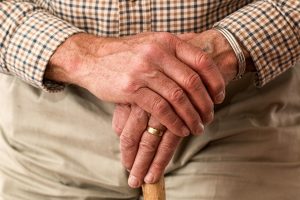Joint economy concerns all the strategies that allow us to perform an activity with the least possible effort, using joints correctly and thereby avoiding overload or incorrect stress on osteoarticular structures.
Particular attention is given in cases of **hand osteoarthritis**.
It involves adopting a different method of working, based on simple yet essential measures that not only reduce or prevent pain but also delay—or possibly avoid—the onset of deformities in the wrist and fingers.
What are the principles of joint economy?
- Correct hand positioning: during rest periods, it is important for the hand to be relaxed on a flat surface and aligned with the wrist.
- Take breaks and respect pain: it is essential to respect your fatigue limits: work should be interspersed with pauses to protect your joints. Additionally, more strenuous activities should be spread across multiple days.
- Keep weights as close to the body as possible and use both hands or arms: when carrying weights, hold them close to the body to use the stronger joints and distribute the load across multiple joints.
- Sit when possible and move often: tasks that can be done seated (e.g., ironing, cutting vegetables) should be performed while sitting. Ideally, use a chair adjustable in height and tilt.
- Avoid unnecessary effort: it is preferable to move objects on wheeled carts or push them rather than lift them.
- Padded grips: padding handles of objects makes the grip softer, easier to hold, and distributes the weight across the entire hand.
- Use long-lever tools: this reduces stress on smaller joints. By using levers, force is multiplied, resulting in a correct full-hand grip while decreasing the effort required.
Examples of JOINT PROTECTION in daily activities
Cutlery
Using standard cutlery can create incorrect hand positions, specifically:- The spoon promotes ulnar deviation (outward) of the fingers.
- The knife and fork activate the flexor muscles, which bend the finger joints (except the index) and finger bases to grip the handle, increasing the risk of first-phalanx subluxation.
- Cutlery is brought to the mouth with the wrist angled relative to the hand.
- Reduces the risk of palmar subluxation of the first phalanx
- Decreases ulnar deviation of the fingers
Glasses and cups
Glasses should be lightweight, with the palm fitting well on the surface. Coffee cups are particularly harmful to the joints because lifting them uses a lateral pinch grip; to avoid this, lift the cup using both hands.Opening jars and bottles
These tasks require strong grips from both hands and should be avoided when possible. Use jar openers and bottle openers for assistance.Clothing
Morning is the most difficult time of day due to stiffness, which makes joints swollen, painful, and hard to move. Some precautions: – Prepare clothing the night before to reduce morning tasks; – Ensure clothes are stored in easily reachable wardrobes; – Dress legs and feet first, as these movements require more energy; – Sit while dressing, lifting one leg onto the other; – Follow the same method for putting on shoes; – Wear comfortable clothes with front closures for easier handling and reduced energy expenditure; – For limited hip/knee movement or reduced hand strength, use velcro straps on clothing for easier dressing; – Large buttons or hooks reduce hand muscle fatigue and joint stress; – For buttons, use button hooks or adhesive alternatives (velcro); – Zippers can be attached to a handle or ring for easier use.If your company is based in Ticino, request more information about the ERGO-CHECK. This is a prevention and care service designed to support human resources while also benefiting the business owner.


